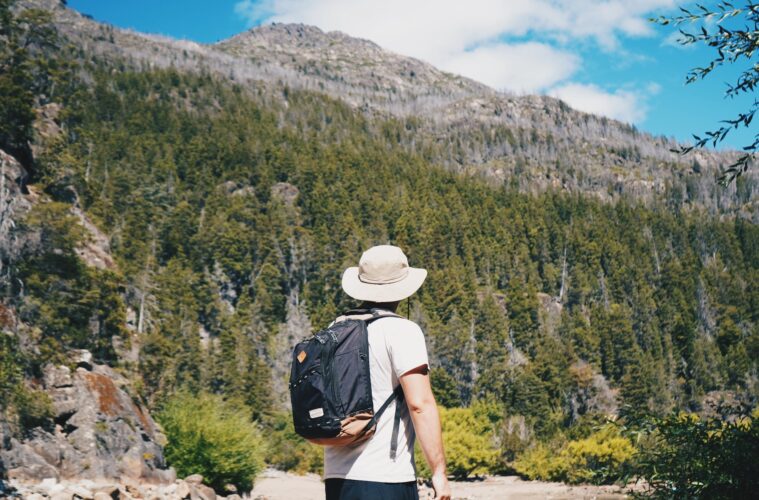Embarking on a solo hiking adventure is a thrilling and transformative experience. It allows you to reconnect with nature, challenge your physical and mental boundaries, and enjoy the freedom of self-discovery. However, solo hiking also requires careful planning and preparation to ensure your safety and enhance the overall enjoyment of your journey. In this article, we will provide you with a comprehensive guide on how to prepare for a solo hike, covering everything from choosing the right trail to packing essential gear and staying safe in the wilderness.
Solo Hiking: A Comprehensive Guide to Preparation
1. Research and Choose Your Trail
Selecting the right trail is paramount when planning a solo hike. Consider your fitness level, experience, and the time you have available. Research various trails, considering factors such as distance, elevation, difficulty, weather conditions, and available resources along the route. Study maps, guidebooks, and online resources to gather as much information as possible about the trail, including any potential hazards or challenges.
2. Assess Your Fitness Level and Skills
Solo hiking requires a certain level of physical fitness and outdoor skills. Assess your current fitness level honestly and gradually work towards improving it if necessary. Engage in regular physical activities such as hiking, walking, and strength training to build endurance and stamina. Additionally, develop or enhance essential outdoor skills such as navigation, first aid, fire building, and water purification. Consider taking classes or workshops to learn and practice these skills.
3. Prepare a Detailed Itinerary
Before heading out on your solo hike, create a detailed itinerary outlining your daily plans, estimated distances, and camping spots. Share this itinerary with a trusted friend or family member, along with information about when you plan to start and finish your hike. In case of emergencies, this information will be crucial for search and rescue teams. Stick to your planned itinerary as much as possible and update your contact person regularly if any changes occur.
4. Check Weather Conditions
Stay updated on the weather forecast for your chosen trail. Be aware of any sudden changes in weather patterns that could affect your hike. Prepare accordingly by packing appropriate clothing, including rain gear and insulation layers, to stay comfortable and safe in different conditions. Avoid hiking during extreme weather events or if the forecast predicts hazardous conditions.
5. Pack Essential Gear
Having the right gear is essential for a successful solo hike. Prepare a comprehensive packing list and ensure you have all the necessary items. These include:
– Backpack: Choose a well-fitting, comfortable backpack with enough capacity to hold your gear.
– Navigation tools: Carry a map, compass, and GPS device to navigate the trail.
– Shelter: Bring a lightweight tent, sleeping bag, and sleeping pad for a comfortable night’s sleep.
– Clothing: Pack moisture-wicking, quick-drying clothing suitable for the expected weather conditions. Include extra layers, a hat, gloves, and sturdy hiking boots.
– Food and water: Carry ample food and water for the duration of your hike, along with a water filtration system or purification tablets for refilling along the way.
– First aid kit: Include essential medical supplies, such as bandages, antiseptic ointment, pain relievers, and any personal medications.
– Survival tools: Carry a multi-tool, headlamp, fire starter, whistle, and emergency blanket.
– Communication devices: Bring a fully charged mobile phone, a backup power source, and a satellite communication device if available.
6. Practice Leave No Trace Principles
Respect and preserve the natural environment by following Leave No Trace principles. Minimise your impact on the trail by properly disposing of waste, refraining from littering, and avoiding damaging vegetation. Use designated campsites and trails, and leave natural and cultural artefacts untouched.
7. Stay Safe and Informed
Prioritise your safety while hiking solo. Inform someone of your plans, carry a whistle for emergencies, and know the emergency contact numbers for the area you are hiking in. Be aware of wildlife in the area and take necessary precautions. Avoid hiking at night or in unfamiliar areas, and trust your instincts if you sense danger. Always prioritise your personal well-being and make conservative decisions if circumstances become uncertain or hazardous.
Solo Hiking Preparation Conclusion:
Solo hiking can be a transformative and empowering experience, but it requires thorough preparation and careful planning. By choosing the right trail, assessing your fitness level, preparing a detailed itinerary, packing essential gear, and prioritising safety, you can set yourself up for a successful and enjoyable solo hike. Embrace the opportunity to reconnect with nature, challenge yourself, and embark on a journey of self-discovery, all while staying safe and responsible in the wilderness. Happy trails!

